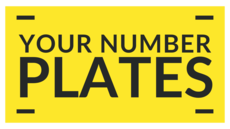1. Introduction – The Rising Popularity of Custom Plates
Custom number plates have become a fashionable way to make a vehicle stand out. From subtle stylistic touches to bold designs, many drivers now seek plates that reflect personality. However, the line between creative expression and legal obligation is sharper than it appears.
2. Defining Show Plates
Show plates are decorative or novelty plates created for display purposes. They are often used at car exhibitions, private events, photoshoots, or as garage décor. Free from strict legal constraints, these plates allow greater freedom in fonts, colours, and layouts.
3. Defining Legal Plates
Legal plates are those that conform fully to the UK’s DVLA regulations. They must meet precise standards in size, reflectivity, character font, spacing, and British Standard markings. Only these plates can be used for lawful driving on public roads.
4. Key Purpose and Usage Distinctions
The primary difference lies in function. Show plates are intended for aesthetic display, while legal plates are functional identifiers linked to a registered vehicle. One serves as an accessory, the other as a government-recognised vehicle ID.
5. Design and Customisation Freedom in Show Plates
With show plates, the creative boundaries widen. Exotic fonts, vibrant colours, background images, logos, and unique character arrangements are common. Enthusiasts often use them to complement a vehicle’s theme during exhibitions or as statement pieces in photography.
6. Legal Restrictions on Plate Design in the UK
On public roads, customisation is heavily restricted. DVLA rules dictate black characters on a white background for the front plate and black on yellow for the rear. Fonts must follow the Charles Wright standard, and spacing must be uniform and exact. Decorative elements that obscure clarity are prohibited.
7. Material and Manufacturing Standards for Legal Plates
Legal plates must be produced from durable materials, typically acrylic or aluminium, capable of withstanding weather extremes. They must be securely fixed, shatter-resistant, and maintain readability even under adverse conditions.
8. Reflectivity, Font, and Spacing Requirements
A compliant plate has a reflective background to ensure visibility at night, but the characters themselves must not be reflective. The font must be 79mm tall with a 50mm wide character space, separated by an 11mm gap. Deviating from these dimensions risks invalidating the plate.
9. When Show Plates Can and Cannot Be Used on Roads
Show plates can only be displayed on public roads if they happen to meet every legal specification. Any deviation—no matter how minor—renders them unlawful for road use. Their primary safe domain remains exhibitions, off-road events, and private land.
10. Enforcement and Penalties for Misuse of Show Plates
Drivers caught using non-compliant plates on public roads may face fines up to £1,000, MOT failure, and in severe cases, vehicle seizure. ANPR cameras and roadside checks ensure such violations rarely go unnoticed.
11. The Role of DVLA in Plate Regulation
The DVLA maintains strict oversight on number plate standards, approving registered suppliers, enforcing design compliance, and linking every legal plate to the national vehicle database. This regulation is central to road safety and crime prevention.
12. Quality Considerations – Aesthetic Appeal vs Legal Compliance
While show plates often focus on visual impact, legal plates prioritise function and compliance. High-quality legal plates can still offer aesthetic refinement through premium materials and crisp manufacturing, without breaching regulations.
13. Risks Associated with Using Non-Compliant Plates on Public Roads
Beyond legal penalties, non-compliant plates risk causing identification issues in accidents, traffic incidents, or insurance claims. Incorrect plates can also affect automated toll systems and congestion charge recognition.
14. How to Choose the Right Plate for Your Purpose
The decision depends on intended use. For public roads, compliance is non-negotiable. For shows and private display, show plates allow creative expression without legal consequences. Many enthusiasts own both types for different settings.
15. Conclusion – Balancing Creativity and Compliance
Show plates and legal plates each serve distinct roles. The key lies in recognising where one ends and the other begins. Creative flair should never come at the cost of legality on public roads, but within the right context, both can coexist harmoniously.

